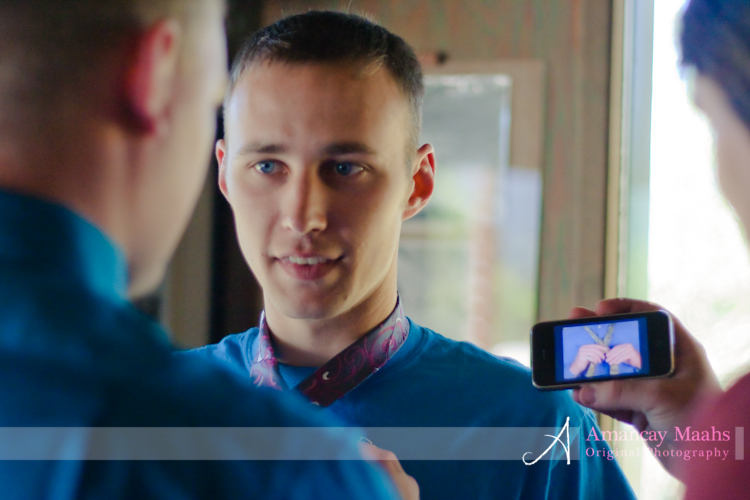Learn a Persuasion Trick in Less Than a Minute
It’s called the foot-in-the-door phenomenon, and it’s one of social psychology’s tried-and-true techniques. Watch the above video to learn all you need to know about it in 59 seconds. Then try it out and let us know your results.
Watching a Training Video Can Change Your Brain
In December 2013, 188.2 million Americans watched 52.4 billion online content videos. And they weren’t all about cats. In fact, I bet some of them were instructional videos. And just watching these types of videos can change your brain structure and increase your motor skills, according to a study from the American Academy of Neurology.
Researchers had 36 right-handed adults participate in a 40-minute training session five times a week for two weeks (I know, a lot of numbers there, but stick with me). Videos of a specific task (e.g., handling coins, cutting with scissors, etc.) were shown to half the group, who were then asked to complete the task themselves. The other half of the group watched videos of landscapes before being asked to complete the same tasks as the other group.
The groups were tested for strength and hand skills at the start of the study and two weeks later, as well as having their brains scanned to measure brain volume changes.
Researchers found that the participants who completed the training and watched the activity on the video had 11 times greater improvement of motor skill abilities, primarily in strength, compared to the landscape watching participants. The activity video watching participants also had an increase in gray matter volume. Gray matter contains the brain’s cell bodies and is often attributed to intelligence.
“Our study lends credence to the idea that even as an adult, your brain is able to better learn skills just by watching the activity take place,” said study author Paolo Preziosa, MD, with San Raffaele Hospital in Milan, Italy. “With a dramatic increase of videos available through mobile phones, computers, and other newer technology, this topic should be the focus of more research. The results might also contribute to reducing disability and improving quality of those who are impaired or who are undergoing physical rehabilitation.”
Do you use videos to help train your staff or yourself? How effective do you find them?
Polly LaBarre Named as VenueConnect Keynote Speaker

We are pleased to announce that Polly LaBarre will be our keynote speaker at VenueConnect in Portland, Oregon, July 26-29.
LaBarre is co-author of the book Mavericks at Work: Why the Most Original Minds in Business Win. She is also co-founder and editorial director of the MIX (Management Innovation eXchange), an original team member of Fast Company magazine, and a CNN correspondent focusing on business ideas and best practices.
Her specialties include helping shape the future of organizations, work, and success, with recent research centering on social innovation and sustainable capitalism.
Check out the upcoming February/March issue of FM magazine for an exclusive interview with LaBarre, and please sign-up to be notified when registration opens for VenueConnect.
Why Leadership Training for Influential Employees is Good
Every organization has influential employees, but because they don’t have a role like “manager” or “director” as part of their titles they are often overlooked for leadership training.
“It may be someone in product development who without any direct reports, plays an essential role in the selection and development of new products,” Jack Zenger and Joseph Folkman wrote on the HBR Blog Network. “It may be a key salesperson, who because of some unique connection with customers exerts a powerful influence on the organization’s go to market strategy.”
Zenger and Folkman believe that these employees are true leaders, too.
“They often get overlooked for any kind of leadership development because they don’t manage or supervise anyone and aren’t thought to need training in management basics like budgeting,” they wrote.
If you have these types of influential employees, it’s wise to invest in leadership training for them. Zenger and Folkman offer four reasons why:
1) Investing in their leadership development will make these valuable people feel highly valued.
2) Talented individuals are more inclined to stay with organizations when they feel they are progressing.
3) They will enjoy increased success.
4) Some of them could well develop into excellent managers.
Please read their article on the HBR Blog Network for the complete story. And while you’re thinking about leadership training, consider applying for the IAVM Senior Executive Symposium, May 12-15, at Cornell University in Ithaca, N.Y. Applications close March 31.
Do Our Winter Weather Woes Suggest a Severe Spring Season?
 Perhaps, when Puxatony Phil emerged from his hiding place this past February 2, someone should have shot him (with an elephant dart and gently set him back to sleep in his nest of twigs and leaves, of course). With reports coming in of record snowfalls across the country, many of us are really ready for this winter to end!
Perhaps, when Puxatony Phil emerged from his hiding place this past February 2, someone should have shot him (with an elephant dart and gently set him back to sleep in his nest of twigs and leaves, of course). With reports coming in of record snowfalls across the country, many of us are really ready for this winter to end!
Much of the country has suffered serious winter weather woes, from the bitter temperatures in the Northeast and Central U.S. to the freezing rains and sleet experienced by Southern states from Texas to Georgia.
In fact, many news channels are projecting that the 2013-2014 Season may turn out to be one of the worst on record. Here are some snow stats from the major cities:
Philadelphia is in the midst of their 3rd snowiest winter ever with a current total of 58.7 inches and counting.
New York is reporting the 7th snowiest winter at 57.1 inches.
Chicago is digging out of its fifth snowiest season with 66.8 inches.
Detroit is coming in with its 3rd largest snowfall report of 76.4 inches.
Washington, D.C., is reporting that their 15.2 inches of snow reported at Reagan National Airport is roughly the equivalent of the past three winter accumulations put together.
All of this winter weather is just a pre-cursor to the real severe weather season, which begins in April, when snow and ice turn to straight-line winds, lightning, tornadoes, and rain. And, if the extreme winter is any indication, our spring season could be quite challenging for our venues. With this, we want to remind you to be prepared, take out your severe weather preparedness plans, dust them off, and bring them with you to IAVM’s Severe Weather Planning and Preparedness this March 4-5, in Norman, Oklahoma. The experts at the National Weather Center will help you ensure your venue is ready for what we will all hope is a mild one.
Register today for IAVM’s Severe Weather Planning and Preparedness
(photo credit: Gilles Gonthier via photopin cc)
Do you want to receive a Front Row News weekly digest?
Categories
- Allied (861)
- Architecture (147)
- Arenas (750)
- Career (897)
- Convention Centers (897)
- Education (623)
- Events (1,544)
- Food & Beverage (193)
- Foundation (113)
- Guest Experience (1,497)
- Industry News (2,270)
- Leadership (1,888)
- Marketing (150)
- Membership (2,001)
- Music (213)
- Performing Arts Centers (456)
- Professional Development (409)
- Research (128)
- Safety & Security (442)
- Sports (764)
- Stadiums (611)
- Student (159)
- Technology (516)
- Ticketing (92)
- Touring (82)
- Trends (365)
- Uncategorized (697)
- Universities (218)
- Video (25)
- Young Professional (198)
Twitter Feed
- Twitter feed loading
Recent Posts
- Simpleview Welcomes Industry Veteran, Evelyn Ingram, to Newly Created Venue Digital Strategy Role
- ‘Another One’ for Nicholas Family of Companies: Firm to Break Ground on Elk Grove Ice Arena in Suburban Chicago
- Venue Sustainalytics Launches Website for First-Ever Sustainability Benchmarking Platform for Event Venues
- Maverik Center Names Jeff Davis, CVE, CVP, CMP, as New General Manager
- McAllen and Hidalgo Promoter Joe Vera III, CFEE, CECD, Among Those We Will Miss
Categories
- Allied
- Architecture
- Arenas
- Career
- Convention Centers
- Education
- Events
- Food & Beverage
- Foundation
- Guest Experience
- Industry News
- Leadership
- Marketing
- Membership
- Music
- Performing Arts Centers
- Professional Development
- Research
- Safety & Security
- Sports
- Stadiums
- Student
- Technology
- Ticketing
- Touring
- Trends
- Uncategorized
- Universities
- Video
- Young Professional
Archives
- August 2025
- July 2025
- June 2025
- May 2025
- April 2025
- March 2025
- February 2025
- January 2025
- December 2024
- November 2024
- October 2024
- September 2024
- August 2024
- July 2024
- June 2024
- May 2024
- April 2024
- March 2024
- February 2024
- January 2024
- December 2023
- November 2023
- October 2023
- September 2023
- August 2023
- July 2023
- June 2023
- May 2023
- April 2023
- March 2023
- February 2023
- January 2023
- December 2022
- November 2022
- October 2022
- September 2022
- August 2022
- July 2022
- June 2022
- May 2022
- April 2022
- March 2022
- February 2022
- January 2022
- December 2021
- November 2021
- October 2021
- September 2021
- August 2021
- July 2021
- June 2021
- May 2021
- April 2021
- March 2021
- February 2021
- January 2021
- December 2020
- November 2020
- October 2020
- September 2020
- August 2020
- July 2020
- June 2020
- May 2020
- April 2020
- March 2020
- February 2020
- January 2020
- December 2019
- November 2019
- October 2019
- September 2019
- August 2019
- July 2019
- June 2019
- May 2019
- April 2019
- March 2019
- February 2019
- January 2019
- December 2018
- November 2018
- October 2018
- September 2018
- August 2018
- July 2018
- June 2018
- May 2018
- April 2018
- March 2018
- February 2018
- January 2018
- December 2017
- November 2017
- October 2017
- September 2017
- August 2017
- July 2017
- June 2017
- May 2017
- April 2017
- March 2017
- February 2017
- January 2017
- December 2016
- November 2016
- October 2016
- September 2016
- August 2016
- July 2016
- June 2016
- May 2016
- April 2016
- March 2016
- February 2016
- January 2016
- December 2015
- November 2015
- October 2015
- September 2015
- August 2015
- July 2015
- June 2015
- May 2015
- April 2015
- March 2015
- February 2015
- January 2015
- December 2014
- November 2014
- October 2014
- September 2014
- August 2014
- July 2014
- June 2014
- May 2014
- April 2014
- March 2014
- February 2014
- January 2014
- December 2013
- November 2013
- October 2013
- September 2013
- August 2013
- July 2013
- June 2013
- May 2013
- April 2013
- March 2013
- February 2013
- January 2013
- May 2012
- March 2012
- December 2011
- November 2011
- October 2011
Recent Comments
- Frank Bradshaw, Ph.D., CVE on John Meyer, CVE, a Tireless Advocate of Certification for Venue Professionals, Has Died
- Neil Sulkes on Hilary Hartung, Friend to Many in Venue Marketing, Has Left Us
- Jason Parker, CVE on The Devastation of Hurricane Helene and How We Can Support One Another
- Larry Perkins on Touhey Testifies Against Speculative Ticketing Before Congressional Subcommittee
- Peter Secord on Major Players for Planned Elkhart Amphitheater Were in the Mix at VenueConnect


